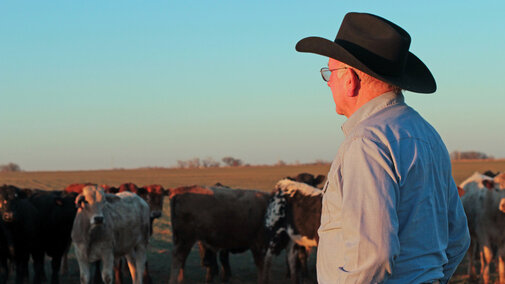Year in Review
As humans, we often like to try and compare things to average or normal. Was the precipitation received within the expected normal range? Were temperatures for a particular season outside of normal? Was our pasture or hay production in the range we consider normal?
Taking this time to look back on last year is beneficial, but resist the temptation to compare things to normal. Very rarely do things in the ever-changing world of agriculture really meet average or normal.
For many of us, last year started out dry, and that trend continued. Still, rain did fall, and in some cases, the right timing meant maintaining pasture condition instead of pulling of early. Every year is different, nature is never static. If it were, our job as producers would be much easier. As it is, we lay out our plans, then inevitably have to adapt as Mother Nature throws one curveball after another our way.
Producers work in a dynamic system that seldom repeats itself. In doing so, we learn to be adaptive, build resilience into our production and planning, and try to spread our eggs out amongst several different baskets. When you take time to look back this year on the challenges and successes, try to see where adapting to a problem worked or how a bit more flexibility next year could keep an issue from arising. Leave the normal and average comparisons out.
Looking Forward to 2023
As 2023 begins, we need to look back at 2022 to appreciate what grazing and forage improvements may be needed in 2023. Stick around and I will give you my thoughts on 2023 pasture management needs.
We are hopeful the drought conditions from 2022 will improve, but we should expect lingering effects on forage production, even when moisture returns to more favorable levels.
It is likely that we will continue to see reduced perennial grass forage growth this spring. It is important to delay grazing, to ensure that pastures are not stressed during early growth. If needed, reduce stocking rate either by grazing fewer animals or grazing for fewer days.
In grass pastures, we could see increased broadleaf weeds because of close grazing during last year’s grazing season. Should dry conditions continue, these weeds will quickly use up any available moisture. This spring, make it a point to spray before pasture weeds are 2-4 inches tall and you should have good success.
It is important to take advantage of limited moisture using reduced but timely fertilization in grass pastures. Given the increased potential for increased pasture weeds in 2023, it may be necessary to couple weed control with any fertilization to control weeds more effectively, while at the same time increasing pasture production of the grass.
Lastly, remember that drought-stressed pastures often are in better condition than they appear. This can be especially true for pastures that were well-managed prior to drought. The key elements, of course, are rain and rest.
Have a Happy New Year!

